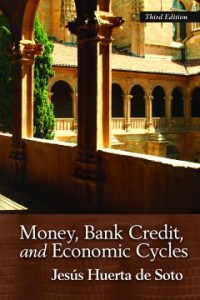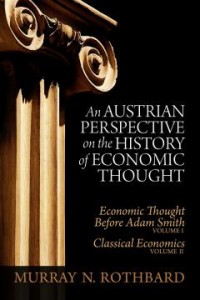Here are some books and resources I highly recommend. This is a work in progress, so please check again periodically (I have added a tab at the top menu that will bring you here). Where applicable, the links and icons below will take you to the corresponding Amazon, bookstore, or course page (see footnote). Thank you!
Healthcare history and policy
You may disagree, but I believe that one of my most important blog posts is the one about the early years of the Mayo Clinic. I was able to write it after reading this Sketch of the History of the Mayo Clinic and the Foundation from the Mayo Foundation. A very matter-of-fact account of the birth and first decades of the Mayo Clinic, this book documents American medicine and the American spirit at their finest.
I don’t always agree with Kenneth Ludmerer‘s interpretation of the history of American medical education, but his two books are essential reading for anyone who has a serious interest in understanding where we were and how we came to where we are now. The necessary historical backgrou

Ffrangcon Roberts is best known for his Medical Terms: Their Origins and Construction which I have not read, but is the only work of his currently available on Amazon. Roberts was a learned British physician of the best kind who wrote, among other things, Good English for Medical Writers. Judging by his prose in writings of his I am familiar with, I would bet that to be a great resource.
I highly recommend The Cost of Health. That book was written in the aftermath of the Beveridge report (which gave rise to the NHS). Roberts was considered a Cassandra at the time, predicting that universal healthcare would be unsustainable, but his analysis was certainly prescient. This is a book on healthcare economics written by a physician and its beginning chapters discuss such concepts such as “health” and the nature of medical science, which are obviously pertinent to the topic but usually overlooked by healthcare economists. F.A. Hayek referred to it when he expressed his own views on healthcare in the Constitution of Liberty (in which he controversially stated that “a case could be made” for compulsory health insurance). I actually disagree with Roberts view on health, but it is nevertheless an important read.
Richard Harrison Shryock was a leading American medical historian of the twentieth century. (For some reason, he doesn’t have an English Wikipedia entry but has one in German). He wrote Medical Licensing in America, 1650-1965, which seems to be the definitive book on the history of medical licensing in this country. Shryock is very partial to licensing, but the book is still an excellent historical resource. As a counterpoint, I cannot recommend enough the paper by historian Ronald Hamowy entitled “The Early Development of Medical Licensing Laws in the United States, 1875-1900.” Hamowy chronicles the efforts of the American Medical Association to reinstate licensing laws and portrays those efforts in a very different light. The article is available for free here.
An outstanding book on the topic of licensing is Of Foxes and Hen Houses: Licensing and the Health Professions, by Stanley Gross. This was a real eye-opener for me. It includes a very provocative chapter on the question of licensing and quality. Though written in 1984, it is still very relevant today.
Primal Prescription is a recent book written in tandem by an Austrian economist, Robert Murphy, and an emergency room physician Doug McGuff. It gives a great overview of all the perverse aspects of the current American healthcare system such as EMTALA, the HIPAA legislation, the shenanigans at the FDA, and it includes recent developments related to the Affordable Care Act. The book also gives a brief historical background to the American healthcare system in the introduction. Importantly, the latter part of the book gives the reader advice about how to navigate the system and avoid some of its pitfalls.
Economics
Henry Hazlitt‘s 1946 classic collection of essays, Economics in One Lesson, is a pleasure to read and remains highly relevant today. The author takes Frederic Bastiat’s famous “Parable of the Broken Window” as a departure point and shows how the application of its lesson sheds light on the proper solution to many common economic problems.
How an Economy Grows and Why it Crashes by Peter and Andrew Schiff is a very accessible introduction to principles of economic production, growth, money, and banking, and to the Austrian business cycle theory. Written for a young reader, and using “Crusoe economics” as a didactic method, it conveys the basic concepts in a very accurate yet practical and lively manner.
For anyone interested in an online course on economics, I cannot recommend highly enough the two courses offered by Jeff Herbener, who is the head of the department of economics at Grove City College. The first one is a step-by-step Introduction to Austrian School Economics, and the other one is a point-by-point comparison between this school of economics and the standard neoclassical approach entitled “What’s Wrong with Textbook Economics.” The courses are offered through Tom Woods’ Liberty Classroom, and signing up there also gives you access to a large number of outstanding other courses on American history, the history of political thought, Western civilization, and many others important aspects of the intellectual movement of classical liberalism.
 For anyone willing to dive deep into the Austrian economics theory of money, bank credit, and the business cycle, you may want to consider reading this great book by Jesus Huerta de Soto Money, Bank Credit, and Economic Cycle. It may seem daunting but it is very readable, even for a novice. The first few chapters about the definition and legal aspects of financial contracts are outstanding. The book is available in electronic form for free but you may want to get the hard copy as it is close to 900 pages.
For anyone willing to dive deep into the Austrian economics theory of money, bank credit, and the business cycle, you may want to consider reading this great book by Jesus Huerta de Soto Money, Bank Credit, and Economic Cycle. It may seem daunting but it is very readable, even for a novice. The first few chapters about the definition and legal aspects of financial contracts are outstanding. The book is available in electronic form for free but you may want to get the hard copy as it is close to 900 pages.
 Also, for those with the time and interest, the 2-volume Austrian Perspective on the History of Economic Thought by Murray Rothbard is a wonderful work. Having a historical perspective on the development of economic ideas is, in my mind, indispensable. That book set is also available in digital form for free.
Also, for those with the time and interest, the 2-volume Austrian Perspective on the History of Economic Thought by Murray Rothbard is a wonderful work. Having a historical perspective on the development of economic ideas is, in my mind, indispensable. That book set is also available in digital form for free.
 Finally, if you wish to read a scholarly and myth-busting revisionist book on the great depression, Roathbard’s America’s Great Depression is a must read and it also contains a succinct introduction to business cycle theory in the first part of the book. The two major insights that Rothbard gave here in 1963 were that 1) Hoover was anything but a laissez-faire president, and 2) The Great Depression came as a consequence of the inflationary monetary policy of the early 1920’s (and yes, you can have a lot of monetary inflation even when consumer prices are stable).
Finally, if you wish to read a scholarly and myth-busting revisionist book on the great depression, Roathbard’s America’s Great Depression is a must read and it also contains a succinct introduction to business cycle theory in the first part of the book. The two major insights that Rothbard gave here in 1963 were that 1) Hoover was anything but a laissez-faire president, and 2) The Great Depression came as a consequence of the inflationary monetary policy of the early 1920’s (and yes, you can have a lot of monetary inflation even when consumer prices are stable).
Medical Practice- Philosophy – Ethics…
Under construction…








